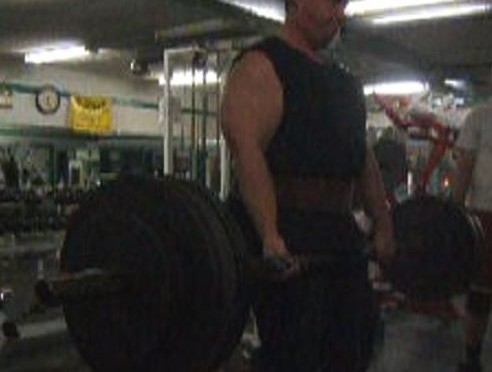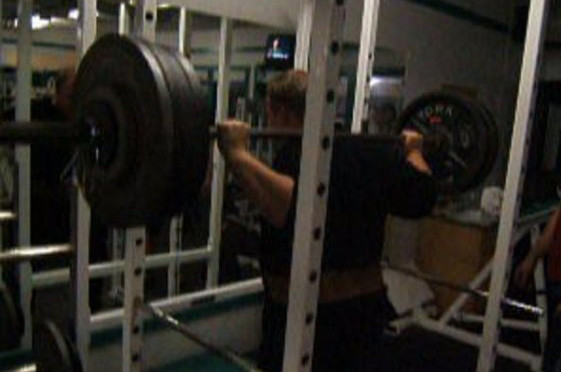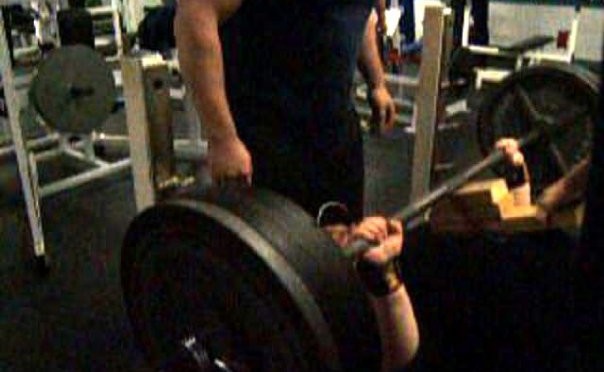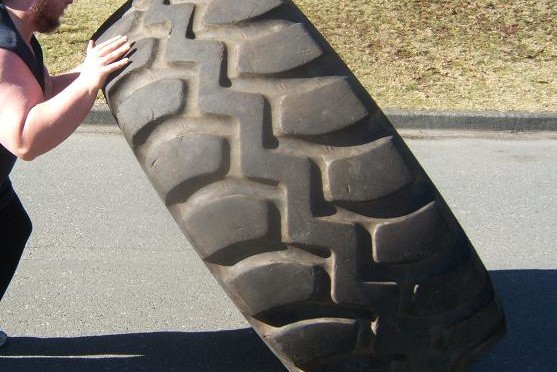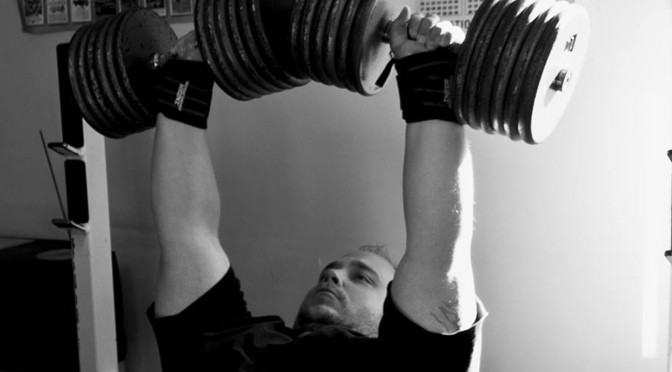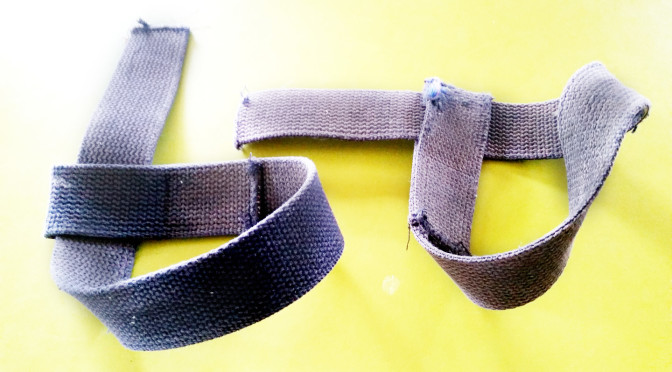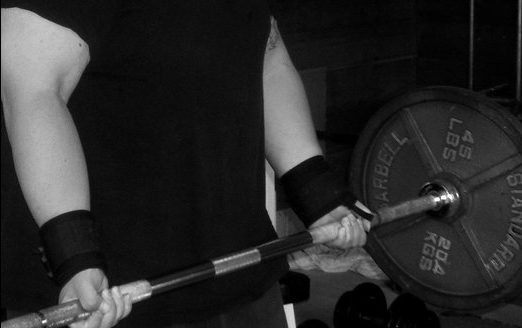Wrist straps are thick pieces of material that wrap around a lifters wrist and strap a tail section to the bar of the weight being lifting. This done right snugs the bar into the hand and greatly reduces the effort that the lifters grip plays in the lift.
The use of wrist straps has been a largely debated subject over the years. The argument for them is that they allow the lifter to push more reps and more weight to a muscle group then what the lifters grip would normally allow. The counter argument is that you should build your grip strength to a point that you do not need to use straps at all and using them only serves to limit ones grip strength potential.
My personal experience with wrist straps has to do with my back. My back has always been my strongest muscle group and this has sometimes made training those muscles in the group difficult. At one time nothing short of 200lb dumbbells would suffice in doing heavy dumbbell rows. But nothing I could do would ever make my grip handle reps with 200lbs for that exercise. So I used wrist straps to compensate and get a proper back set done. However as time went on I found myself using straps more and more, including in lifts where they were not necessary, I started using them for comfort and here is where you should be cautious.
As I began to get into strongman and later powerlifting, I found my grip was lacking. I decided I needed to start focusing on developing my grip with strength exercises specific for gaining grip strength and I eventually became less reliant on straps as time went on. However in certain lifts, such as those 200lb dumbbell rows, I still needed them to fully push myself in that exercise and for certain strongman events such as the car deadlift. I am a believer in that if you want to develop a lift better, than do that lift. So in that regard if you are training to be able to lift a car with straps, train with straps, if you are training to deadlift in a powerlifting event that obviously does not allow them, then train without.
Conclusion
In my experience straps can play a part in any training routine but you have to be very careful not to start to use them as a crutch. There are situation such where you simply cannot maintain your grip to properly push another muscle group to its max. An example to this would be say barbell shrugs for targeting your trapezius muscles. This can (depending on your conditioning) involve a large amount of weight, maybe even more than you can deadlift and to really target that muscle, removing the grip element may be a good idea. Likewise if you are training for an event that allows straps then utilizing them in your training is also not a terrible idea. However, one must not fall into the trap of using straps when not necessary out of comfort. This is especially the case if one is involved in a sport such as powerlifting or strongman where grip becomes a significant factor in performance. If you must use straps more than you should, make sure to put in some grip training now and then. And really ask yourself on each lift you use them on if you truly feel they are needed.

